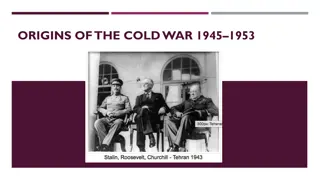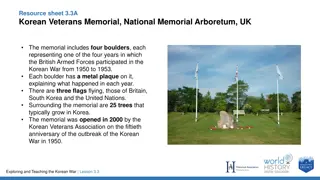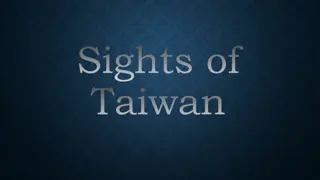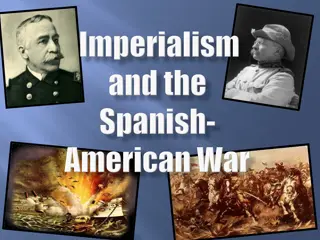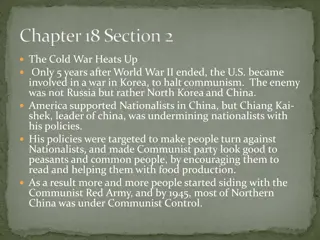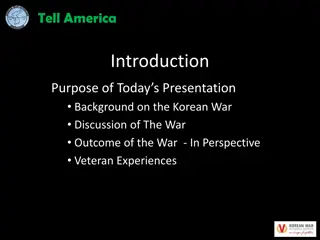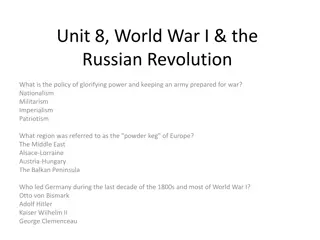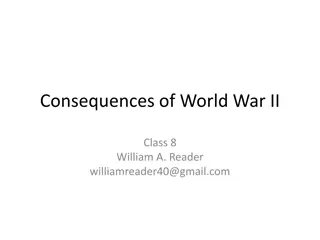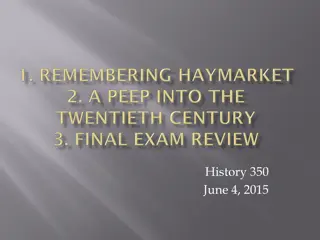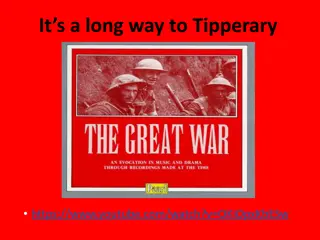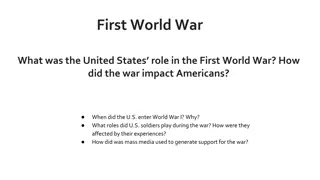Understanding War Memorials: How and Who We Remember
In this lesson, students explore the significance of war memorials in remembering those who sacrificed during wars. They analyze various war memorials, reflect on who is remembered and consider those who may have been left out. Through engaging activities and discussions, the lesson deepens understanding of the impact of wars and the importance of remembrance.
Download Presentation

Please find below an Image/Link to download the presentation.
The content on the website is provided AS IS for your information and personal use only. It may not be sold, licensed, or shared on other websites without obtaining consent from the author. Download presentation by click this link. If you encounter any issues during the download, it is possible that the publisher has removed the file from their server.
E N D
Presentation Transcript
HOW AND WHO DO WE REMEMBER? Lesson Objective: Understanding and describing why war memorials are made and who is remembered through war memorials Lesson 2
Starter If you walk home, how do you know how to get home? (landmarks and remembering) If you were parachuted into Leicester city centre, how could you tell you were in Leicester? 2 minutes Share with a partner the questions on the left (Leicester football grounds, Tigers, clock tower, high cross, buses, statues) Extension Have you seen any statues in Leicester or if you have visited other places? (London, Nottingham, Richard III, Paris)
Have you seen these images before? In your books write down 3 questions you have about these images? What do you think the word cenotaph means? Cenotaph in London Cenotaph means empty tomb Arch of Remembrance Victoria Park, Leicester
In the aftermath of the First World War, the people of Britain needed a focus for their grief, loss and pride. War memorials War memorials were erected across the UK in the greatest wave of remembrance this nation has ever seen. Imperial War Museum Sir Edwin Lutyens created the cenotaph Remembrance, a memorial in New Delhi, India and the Somme in France cenotaph in London, the Arch of Arch of Remembrance - created as a memorial to the Great War Leicestershire soldiers, the sunrise can be viewed between both arches on the 11th of November to mark the end of the WWI, sometimes called the Great War Great War It cost 27,000 pounds and 10,000 pounds was donated by the people of Leicester Who do you think the memorial was made for to Who do you think the memorial was made for to remember? remember? Who do you think was not remembered, or left out? Who do you think was not remembered, or left out?
Who else helped the war effort during WWI that has not been mentioned? (women, teachers, farmers, factory workers, postal workers, medical staff..) What do you think happened to people that did not want to fight in wars? (discussion opening possibility for conscientious objection)
Peace Walk in Victoria Park The Peace Walk represents stories of people from Leicester and around the world that are not represented by traditional war memorials and have their own stories of peace and war to share Some examples are: The British Commonwealth Those who served in Asia during WWII Those affected by radiation and nuclear tests Pacific Indigenous Peoples are not mentioned Hiroshima and Nagasaki (1945) Women and civilians during WWII Remembering People from India, Africa, and the Caribbean Conscientious Objectors Conscientious Objectors Those who served in Spain (1936-1939) Can you think of any other events in history that may also have a memorial?
Reflective Diary Entry 10 minutes Write a diary entry answering the following question: Why do you think we need the Peace Walk and war memorials in 2021? Peace Walk and war memorials in 2021? Why do you think we need the Challenge yourself to use some of the vocabulary words you have learned from this lesson and last lesson War memorial Peace Conscientious objection Poppies Cenotaph WWI WWII Commonwealth Remembrance Ceremony The Somme Statues Women Civilians Great War
Plenary: The Arch of Remembrance was unveiled in 1925 eight years after the end of the Great War. How do you think people felt seeing the memorial for the first time? Why do you think the University of Leicester wanted to be known as a living memorial and a palace of peace ? Challenge yourself to look for memorials or plaques on your future walks


![❤[PDF]⚡ Civil War Talks: Further Reminiscences of George S. Bernard and His Fel](/thumb/20551/pdf-civil-war-talks-further-reminiscences-of-george-s-bernard-and-his-fel.jpg)

